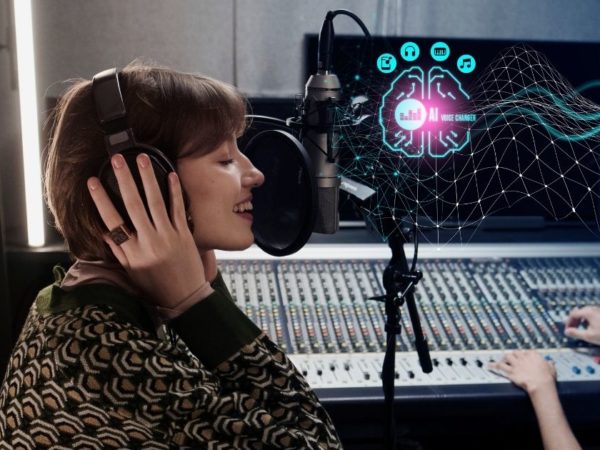One of the underlying themes, regarding the Covid-19 pandemic, is that the world will never be the same.
How we work and do business will fundamentally change in a matter of months and stay with us thereafter. This is partly because the virus will never go away; it will merely be managed. A key component of managing the virus will be social distancing.
Human beings are social creatures; we like the company of others and use physical cues to affirm each other. It’s what we know; it’s what we seek. That’s why a lot of people are finding it hard to process the new norm. The recommended protocols make the social ques built into business relationships harder to happen.
How do you express your commitment without a face to face meeting? How do you provide an empathetic service over a digital interface?
Social Distancing in the Workplace
In general, business economics assumes that you can squeeze out more profits by packing as many employees in a single space as possible. That is no longer feasible. For their own health and that of the customer, employees must be meters aways. That will mean fewer employees per square meter. This will result in;
- Fewer open-plan offices and factories. These workspaces will need clear demarcations like a boundary line drawn on the floor or higher partitions and plexiglass to physically distance and protect workers from infectious droplets due to a sneeze or cough.
- Investments in creating a healthier work environment. For example, installing or improving air filters or IoT devices like sensors to provide data on environmental conditions.
- The cleaning crew or service companies will become more important in operations.
- Masks, sanitizers, and personal protective equipment (PPE) are becoming integral parts of uniforms and work equipment.
- The use of rotational shifts and flexible hours. They will be used to minimize the number of employees in a single site.
- If there are multiple roles that need to perform a similar task on-time, then those tasks can be pooled so that a single or a fewer number of employees can perform them while the rest of the employees work remotely. The responsibility of pooled tasks can be done on a rotational schedule.
Serving customers will also change. How vigorous an organization’s health protocols are, will determine customers’ eagerness to patronize them. So businesses;
- They will need to display their health protocols to gain credibility with visiting customers.
- Practice access control to manage the flow of customers and their risk
- Shift as much of their services online so as to serve customers remotely.
Get On The Cloud

Organizations are scrambling to reorganize how they run operations. The lockdown mandates, social distancing regulations, and social anxiety around the pandemic make coming into the office difficult. Both employers and employees understand that work needs to be done to survive.
But how can organizations remain productive, be safe for employees, and provide effective service to customers?
The answer is in the cloud.
Employees working from home, offsite, or on the move need to access the organization’s resources to work. Emailing files back and forth isn’t efficient since workers need to access data, process information, and provide analysis on a constant basis. The only solution that enables workers to work from anywhere and still have the full resources of the business at their fingertips is the cloud.
Watch how a hair salon is able to have staff onsite, mobile, and remotely communicate and collaborate using Slack.
Most employees who do administrative or desk-bound jobs do not need to be in the office to work. Business functions like ERP, CRM, accounting, and so on can be run from the cloud without losing any efficacy. In fact, working remotely has huge benefits to employees, employers, and customers.
Use Artificial Intelligence
The world currently runs on data. But collecting data is no longer enough; it must be processed, analyzed, and acted upon. Artificial intelligence takes that even further by applying cognitive functions to data i.e., it not only acts on data, but it can learn from it too. The processing and decision making by AI can happen in a split second, giving the technology a clear advantage over human reaction times.
Machine learning, speech recognition will be used in more business processes.
For example, CRM will use chatbots that can recognize speech and handle queries from customers, or ERP will forecast demand and prepare a resource management plan that lowers costs. These functions are not new; they are standard on the cloud.
Here’s Google’s cloud-based contact center solution; it uses the cloud to connect remote agents to customers from any communication platform (including phone, email, social media, and live chat). The solution combines speech recognition, natural language processing, and AI to handle simple queries to resolution or collect information before passing it to an agent.
Adopt Automation
Automation has mostly been associated with robots operating in factories. It will expand to mean more, and driverless vehicle technology will be used in mines along with robotic mining equipment. Factories will operate with no human intervention and potentially managed from miles away.
The lesser-known, but soon to be an equally important form of automation, would be robotic process automation (RPA). RPA software completes rules-based, repetitive tasks. They are already used in full force in banks, law firms, and distribution centers.
Automation powered by AI will be used to reduce the workload of employees. Automated AI is effective at taking away administrative paper-based work. Remote employees do not have access to forms, papers, stamps, signatures, etc. while automated AI is able to collect information, engage customers, verify documents, weigh risks, make a decision and report the results in a fraction of the time.
Collaborate Intelligently
There are a lot of meetings that can be virtual rather than held in-person. This will take some getting used to, the etiquettes and structures of virtual meetings are different, but they can be just as productive. Shifting to virtual meetings will require an investment to equip employees with laptops, reliable internet, and the software needed.
Cloud collaboration platforms are tools that will bring teams together. Cloud collaboration platforms have the standard voice, video, email, and chat communication functions that are further enhanced with additional features like file sharing, file editing, third party apps, automation, and AI.
Frankly speaking, the possibilities are limitless with the cloud. To have a glimpse of how collaboration, automation, and AI can work together, take a look at how the University of New South Wales used Microsoft Teams to provide lectures, class material, class collaboration along with an automated teaching assistant that evolved into a teaching aid.
To be clear, the adaptation to social distancing norms will not necessarily revolutionize the workplace; it will accelerate a change that was already happening. With a few exceptions linked to health-related habits and practices, a lot of the technological change was already happening. That is because the technology that is being adopted is economically viable and effective.
Before the pandemic, businesses were adopting cloud and remote work. According to the Office for National Statistics, 48% of the UK workforce was working remotely due to the pandemic. That is a significant rise from approximately 20% in 2018.



